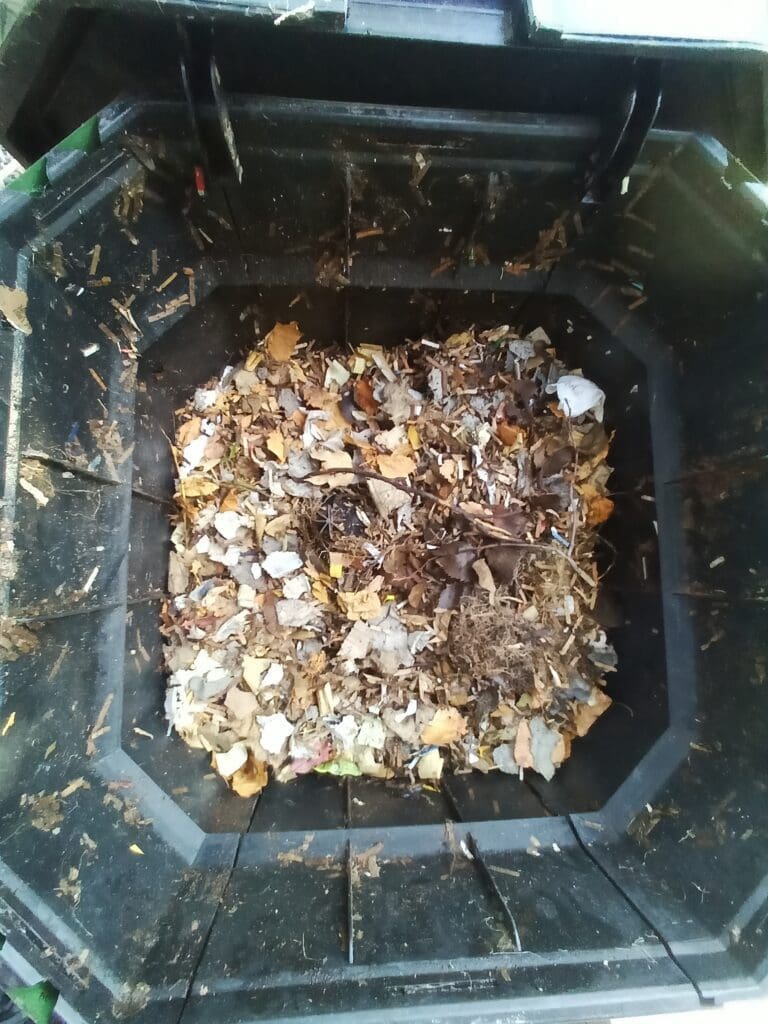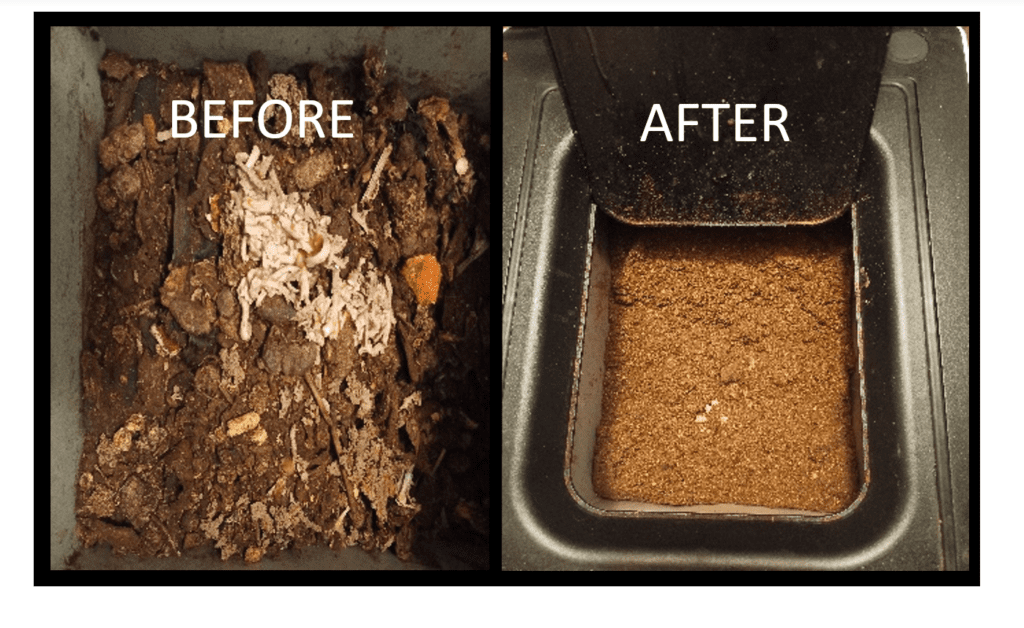HOW TO START COMPOSTING AT HOME FOR BEGINNERS PART III
4. AEROBIN
I live in the Northern Hemisphere and switch from composting outdoors in the spring and summer to indoors in the winter.
As outdoor composting slows, the vermicomposting worms who lived outdoors in the Subpod spring through early fall are moved indoors for the winter to rest, eat, and produce worm castings. All which will be used in the spring for starting seedlings.
I was still on the search for an outdoor composter that I could use in the winter to turn lawn clippings and shredded paper into compost.
The Aerobin Composter fits the bill. The container is insulated to keep outside and retain heat inside. Internal temperatures are hot enough to kill weed seeds, breaking plant matter down more quickly.


One thing I didn’t know when I started using it is by filling it up more than half way, the process takes longer. Instead of dumping a pile of leaves (I made this mistakes at the beginning), I now alternate layering nitrogen (20% ratio) of spent coffee grounds, kitchen waste, cat hair, and carbon (80% ratio) sources of shredded paper and carboard.
I turn over my mulch in the spring and fall, but leave the soil alone. It allows me to clear out any weeds that may have shown up and saving time later in the season.
I reduce the amount of digging by the squirrels by adding the compost on the bottom, layering with top soil, topping off with mulch, and wetting everything down starts the process of getting the microbes and worms to start breaking everything down.
5. GEME
I was looking for a device to compost my cats poop, spent litter, and kitchen waste. I joked with my cats that it was time for them to stop living at home for free and pay their way.
I wanted to separate the cats waste from the compost I use in my veggie garden. My plan was to use the cat waste only in flower beds away from edible plants.
Welcome the newest addition my composting family, the GEME.
Of course as an alternative, you could dig a hole in the yard, insert a bucket with a top on, drill some holes. Once filled, you dig another hole in the yard and repeat the process.
Given I live in a state with four seasons, once the ground freezes and snow take over, the only option is to throw the waste in the trash or store it until spring in an airtight container. Eau de poo? No thank you.
In the past, I didn’t include the cat litter. Different opinions made me cautious to add it, but a representative from the company said it was okay as long as it is bio waste. I use pine pellets.
When the ground freezes and the bin becomes full (during winter), I put the excess compost in an air tight container to use in the spring.
Check out the before and after photo below.

I read up on the Bokashi method. Some use this method in addition to vermicomposting for processing pet waste. I was looking to compost my cats’ poo using the bokashi method and then use GEME to heat treat.
The device uses the aerobic fermentation method, which we call hot composting. During the fermentation, the GEME-Kobold (a heat-resistant composite microbial group) and the industrial-grade purification system can deodorize itself.
If using bio-cat litter, you don’t need to pre-treat it using the bokashi method and can put it directly into GEME
The best part is te GEME is super quiet, uses less electricity, and and there is no smell.
WHAT I HAVE LEARNED
Composting does take a little investment, but doesn’t have to be expensive. I love the idea of a circular system in finding another purpose for something.
In this case, kitchen waste, coffee grounds, cat hair, lawn clippings, contents from the vaccuum cleaner, and shredded paper can serve another purpose. Feed the soil to grow food.
I learned by adding compost and topsoil, soil retains more water and reduces the amount of watering.
I no longer throw away kitchen waste, have reduced garbage going into the bin (less to lift), and spend less time pulling weeds out of the garden. It’s been a win-win.
Add in rain barrels (check to see if your state allows the use of rain barrels to collect rain water) to reduce the amount of water runoff into the sewers and you save a little money on your water bill.
